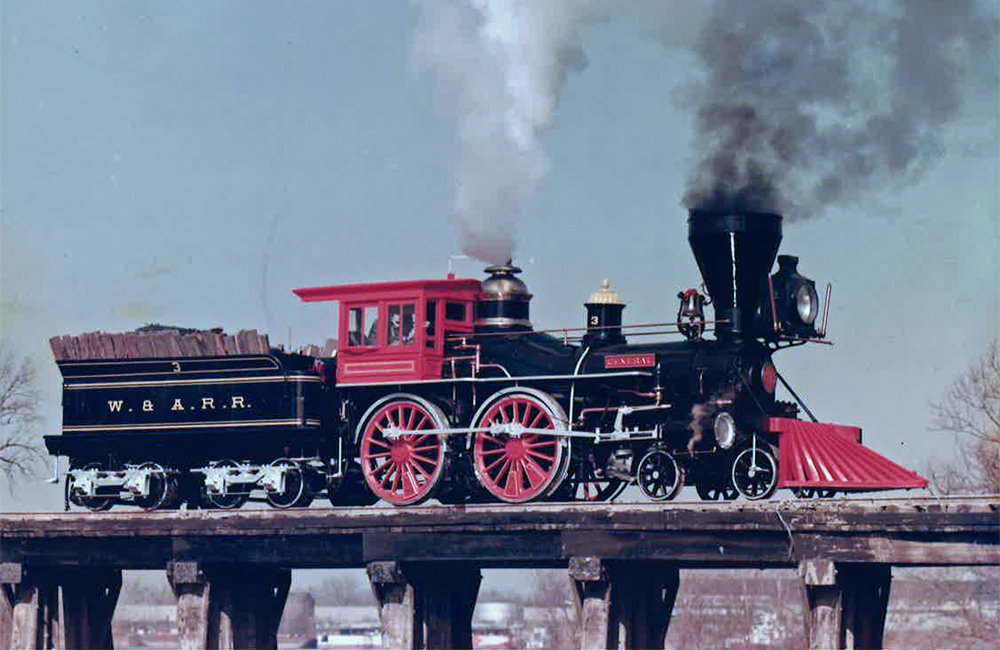
Q: I have a new HO scale 2-6-0 steam locomotive that has trouble negotiating my layout’s 18-inch radius curves. My 4-4-0 locomotive runs fine on the layout. I’ve read that on longer wheelbase locomotives, the center drivers have their wheel flanges removed for tight radius layouts. Is removing the flanges from locomotive drivers a thing to do? Or […]
Read More…

DCC locomotive won’t hold an address Q: I’ve just gotten back into HO scale trains after years in Lionel. My DCC locomotive won’t hold an address using my MRC Prodigy system. I follow the instructions, but it never changes from the default address 3. The new number is not recognized or remembered. It was easy […]
Read More…

Cody Grivno explains the resources available in this video of Ask Trains. Do you have other questions about full-size trains, or would you like to learn more about your model railroad? Send us an email at: AskTrains@trains.com ………………………………… Ask Trains is a regular video feature of Trains.com for magazine subscribers and Trains.com members, where editors answer […]
Read More…

Cody Grivno explains what the part is for on this model in this video of Ask Trains. Do you have questions on parts of model railroad equipment, or would you like to learn more about prototype trains? Send us an email at: AskTrains@trains.com ………………………………… Ask Trains is a regular video feature of Trains.com for magazine subscribers and […]
Read More…

Cody Grivno walks you through examples of covered hoppers in this video of Ask Trains. If you have questions on prototype rolling stock, or want to know more about prototype railroading? Send us an email at: AskTrains@trains.com ………………………………… Ask Trains is a regular video feature of Trains.com for magazine subscribers and Trains.com members, where editors answer […]
Read More…

Cody Grivno answers “Where can I find information on the correct style and size of lettering for specific railroads?” in this video of Ask Trains. Do you have questions about re-lettering your model trains, or would you like to know more about prototype railroading? Send us an email at: AskTrains@trains.com ………………………………… Ask Trains is a regular […]
Read More…

Q: The 4-4-0 American steam locomotive The General burned wood for fuel. Why didn’t it burn coal? – Alexander Brennan A: The ubiquitous 4-4-0 model called The General is modeled after a famous prototype – the Confederate locomotive of the same name, which was commandeered by Union spies in 1862 at Big Shanty, Ga. The subsequent pursuit […]
Read More…

Cody Grivno goes searching for the meaning behind “UTCK” in this video of Ask Trains. Do you have questions on what an acronym stands for, or would you like to learn more about your model railroad? Send us an email at: AskTrains@trains.com Please leave all questions in the comments field below. ………………………………… Ask Trains is a […]
Read More…

Cody Grivno explains how to find a HO scale log car in this video of Ask Trains. Are you trying to find a certain piece of model railroad equipment, or would you like more information on full-size trains? Send us an email at: AskTrains@trains.com If you know of any other resources for the Evans 100-ton […]
Read More…

Measuring track curvature Q: Model railroaders measure curves in inches, which is easily understood. However, prototype railroads measure their curves in degrees. I’m accustomed to degrees as a measure of angles. How do degrees measure radii? – Alan Crouse A: We modelers measure track curvature by radius because it’s convenient. It’s usually easy to locate the center […]
Read More…

Where to buy a locomotive air horn? Cody Grivno explains what where to look to find these more unique and perhaps rare items in this video of Ask Trains. Caution: These things are meant to be loud for airlines to pass a certification, and have to be between 96 and 110 decibels at 100 feet. […]
Read More…

What’s that locomotive? Cody Grivno explains what kind of locomotive is behind the BNSF Ry. road number 4592 in this video of Ask Trains. So there’s a little something for everybody if you want to model these locomotives. The 60 B’s were somewhat noteworthy because they were the first Jeep B units produced by EMD […]
Read More…





